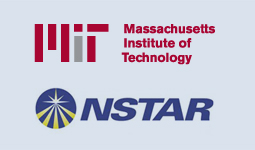Ambitious Collaboration Aims to Cut Campus Electricity Use
In 2012 MIT is saving over nine million kilowatt-hours in electricity consumption on campus. The projects that have contributed to that savings include lighting upgrades across campus, new ventilations strategies to reduce fan velocity, and the installation of new water pumps to more efficiently boost water vertically through the building. With the successful implementation of our final projects in 2012, the project will meet its three-year target of 15% energy reduction across campus. That’s a savings of over 34 Million kilowatt-hours.
In May 2010, MIT established MIT Efficiency Forward a three year, $13M collaborative energy conservation and efficiency program with its electric and gas utility company NSTAR. The program is a first-ever-of-its-kind with a utility company and is the single largest energy efficiency project NSTAR has developed with a customer. The program is investing over $13M over three years, with a mix of funds from MIT, NSTAR incentive payments, and reinvestment of energy savings.
The program employs an innovative funding strategy that leverages funds from MIT, NSTAR incentive payments, and reinvestment of energy savings in additional projects. In addition, the Institute will dedicate its efforts toward a strong community engagement including outreach, awareness, and education on energy conservation and efficiency.
MIT and NSTAR are collaboratively looking ahead to set new, aggressive targets for the future.
Want to do more to reduce energy use on campus? Then take action with the steps below.
Flip the Switch
MIT spends millions of dollars a year on lighting. Reducing lighting use by even 10% could save MIT hundreds of thousands of dollars a year.
Shut the Sash
Did you know that chemical fume hoods can use as much energy as two single family homes?
Resolve to Revolve
Using revolving doors in E25 alone could save MIT $7,500 a year in natural gas costs & 15 tons of CO2.
Print Smarter
Print only what you need, double sided (set defaults on copiers & printers) on recycled content paper, when possible. For more information on printing smarter check out web.mit.edu/printing
Power It Down
Use energy saving modes for computers, monitors, printers, copiers, etc. Turn OFF computers and monitors each night, (but check first with your local system administrator if you use any remote services.
Deploying energy conservation measures for CPU’s, laptops and monitors at MIT could reduce seven million lbs of CO2 annually - the equivalent emissions from 962 homes in Cambridge.
Become a Green Ambassador
The Green Ambassadors program is a network of individuals (faculty, students and staff) interested in taking action in their own lab, office or dormitory to promote more sustainable practices at MIT, including energy conservation, resource efficiency, green purchasing, alternative transportation, awareness, and outreach. Join the effort by emailing green-ambassadors-owner@mit.edu.
What is unique about MIT's program and partnership with NSTAR?
- It is a long-term partnership between a major utility and its customer (initial three year agreement)
- Represents a commitment from MIT to specific annual reduction targets in kilowatt hours totaling 34 million kWh (10 MkWh in 2010, 12 MkWh in 2011 and 2012)
- Includes a commitment from the utility to pay a fixed incentive payment rate for each kWh saved
- MIT is committed to reinvest of a portion of energy savings for additional projects
- It will utilize a portfolio approach to energy project implementation that does not have different incentive rates for different technologies and applications
- Can include incentive payments for power saved from behavior change measures when a mutually acceptable measurement and verification protocol is developed
- Provides streamlined process for savings measurement, verification, and incentive payment
- Provides access to NSTAR’s preferred procurement rates for equipment and services
- Engages MIT’s academic community including anticipated integration of project-based learning and research opportunities
- Engages students through a Student Advisory Group and study projects
- Includes a commitment to strong community engagement, outreach, awareness, and education on energy conservation and efficiency

